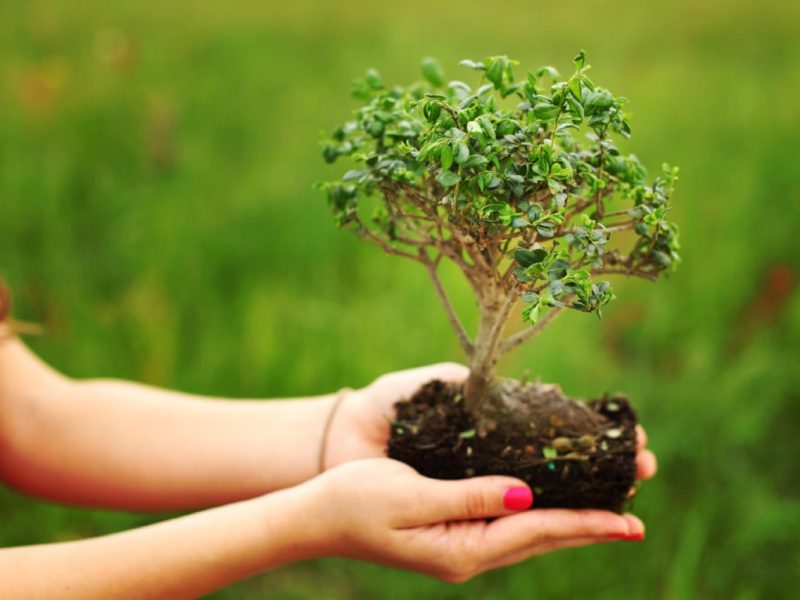In order to stimulate the growth of a bonsai tree, it is necessary to timely and properly shape it. There are two main ways to do this: regular trimming of the already formed crown and global pruning to create the desired style. This article discusses both methods and gives answers to the most frequently asked questions by beginners: How to trim bonsai correctly and how to trim bonsai correctly? Detailed instructions, advice from professionals and experienced amateur growers, will help everyone cope with the uncomplicated task of growing their own original bonsai tree.
Before seriously delving into the issues of forming a lush, neat crown of a bonsai tree, it is better to remember the fourth-grade course of the school program on natural history and refresh in memory the general information about the growth of trees. This knowledge will be a good help in the effective treatment of the native pet.
Any tree instinctively grows upward, a natural tendency that helps the plant survive in the harsh competitive conditions of the wild. The upper and side branches grow fastest, while the lower and side branches often atrophy and die off. These features are important to consider when forming your botanical masterpiece.
Based on the knowledge gained, we can conclude that in order to maintain the shape of the tree it is necessary to regularly cut off the upper and lateral shoots, stimulating the growth of the inner branches.

How to properly trim bonsai
The goal is to give the desired shape.
Methods – pruning all “unnecessary” shoots that grow.
Means – specialized scissors, file, knife. To process the cuts, a special paste.
Time – it is possible year-round, but the ideal time for global interventions will be March-April.
You do not need to be afraid of too pruning your favorite, it is important to remove the tops and side branches in time and regularly, then the tree will develop evenly and will grow a powerful, thick green mass.
A little nuance: for conifers, not trimming, but pinching with the fingers of the hands is used, but the use of specialized tools (scissors) will lead to the yellowing of the needles.
General rules for those who want to know how to trim bonsai properly:
- It is necessary to have patience and think well about the future image of the tree. There is no need to rush to cut everything at once.
- The optimal proportions for a tree in the ratio of the thickness of the trunk to its height will be 1 to 7. Maximum low bonsai are valued the most.
- First of all, remove all the powerful, strong shoots, as they visually thin the overall trunk. In addition, it is almost impossible to direct them properly.
- When shaping the tree, you should make sure that the top is strictly centered and directed upwards, and that the side shoots are carefully directed to the sides without covering the inner branches.
- Only the lower part of the bonsai can be bushy, climbing higher you need to carefully thin out the branches in the front part. The lower part of the trunk, 1/3 of the total height, is usually bare.
- The main powerful branch can descend gracefully as low as possible.
- Remove all closely growing (adjacent), unsightly, deformed shoots that do not lend themselves to shaping with a wire.
- After a good pruning, the crown looks much more modest than originally conceived. This is when the highest results can be achieved.
- After the basic pruning, the plant is certainly given a rest for at least a couple of months.
- The amount of shaping is guided by the fast growth of the plant and its botanical appearance. Some like frequent interventions (ligistrum), and others, on the contrary, no more than once a year (podocarpus).
How to trim bonsai properly
After basic global pruning, it is necessary to periodically monitor the growth of all shoots, redirecting or gently trimming the tips in a timely manner. The crown should be shaped by gently trimming off the excess small branches with scissors. When doing so, look at the plant from top to bottom – a triangle shape will be ideal.
The top is maintained in a strictly vertical position, the side shoots are trimmed at the level of one, two or three leaves. At the same time, the neighboring branches are not allowed to touch.
When the procedure is completed, the tree looks easy and free, all the shoots are placed separately from each other. At the same time, the composition looks very graceful.
Care of the bonsai tree after pruning
After all the activities, your pet will need some time to rebuild and recuperate. In order to help the plant better cope with the stress you need to:
- Lubricate all wounds by hand as soon as possible with a special paste, so that the cuts heal faster and there is as little loss of vital sap as possible. Hygiene products should not be neglected and all procedures should be carried out with gloves.
- To stimulate active growth, the plant is abundantly watered immediately after shaping, and subsequently keep the soil moist without excess.
- Feeding complexes of mineral nutrients will help to strengthen the immunity.



